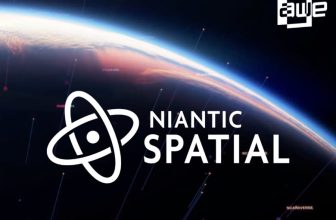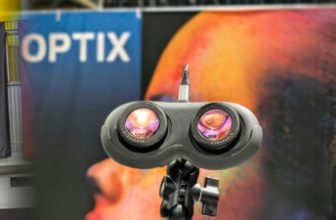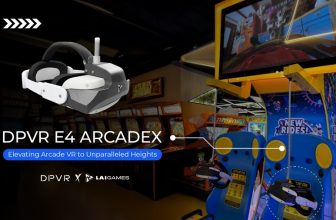
Summary of Titanic: A Space Between
(played on a Meta Quest 3 128 GB model)
| Pros | Cons |
| + Excellent graphics | – Boring gameplay |
| + Exceptionally eerie creatures for enthusiasts of horror | – Clunky base mechanics |
| – Inconsistent in-game logic | |
| – Nausea-inducing |
Note from the editor: The game can currently be accessed via Meta’s App Lab, and it might be in its experimental or developmental stage.
Dear reader,
I am obligated by integrity to let you know that I found this game extremely challenging.
It is disheartening to enter this review with the awareness that I have mostly negative remarks to make about a piece of artwork that was created with great effort over several years by a team consisting of only two individuals.
However, it would be more unpleasant to deceive about it.
Dear reader, please be aware that I always approach each new game I play with a mindset of generosity and optimism.
I desire it to be excellent! I intentionally choose the ones that appear pleasing.
Unfortunately, engaging in the experience of playing “Titanic: A Space Between” feels akin to being in a relationship with an attractive yet unkind individual.
She is visually appealing, but despite your efforts to wait for a genuine connection (due to her attractiveness), every time you try to speak, she interrupts you with another TikTok video that her friend shared with her.
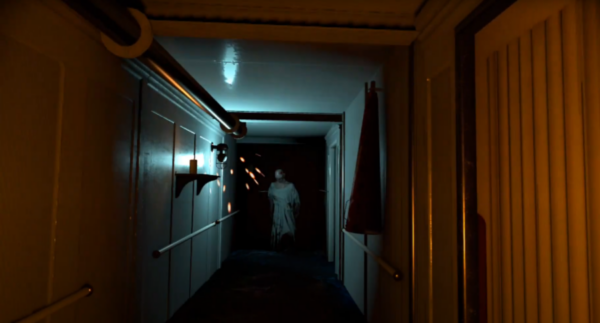
Is she aware that this is intended to be a romantic outing?
Does Titanic: A Space Between acknowledge that it is intended to be a video game?
STORY
I believe that Titanic: A Space Between would have been significantly improved if it had been developed as a VR “experience.” This historical sci-fi horror installment could have capitalized on its strengths by abandoning its tedious, buggy, counterintuitive, unresponsive, and uninspired elements. My apologies for the strong language, but it was truly disappointing.
Apologies, but I am fine.
One sec…
Yes, I am fine… Wooh!
I’m good.
All I’m trying to say is that it could have completely abandoned the gameplay and relied solely on its impressive aesthetics.
Instead of experiencing a captivating, terrifying movie taking place on the famous RMS Titanic from a first-person perspective, we are subjected to consuming repulsive waste using a spoon from one of the exquisitely depicted trash bins in Meta Quest 3.
Before I perpetuate the ongoing cycle of abuse that A Space Between has unfortunately brought upon my family, let me clarify the concept of this game to ensure we have a common understanding.
The game features two unremarkable main characters, a male and a female.
You begin the game properly as the male protagonist, waking up in a room.
For some unknown reason, your hands are extremely repulsive.
A communication expert resembling JARVIS informs you that you will be traveling back in time to investigate three unexplained vanishings associated with the RMS Titanic. Due to a time distortion, a passenger from the Titanic has unexpectedly ended up in our present era. To address this anomaly, time travel was prohibited and the person responsible for inventing this technology went missing.
Another time traveler (female protagonist) sent to investigate the ship has also disappeared, but you—you daring renegade male protagonist—and your comms master are determined to get to the bottom of things!
Our perspective switches, chapter to chapter, between male protagonist and female protagonist as they slowly unravel the paranormal ramifications of messing with space-time and ghost ships.
How the story ends I won’t spoil and also don’t know because I couldn’t get through it.
Fortunately, when I was about three-quarters through playing, a fortunate glitch occurred, freeing me from the need to continue any longer.
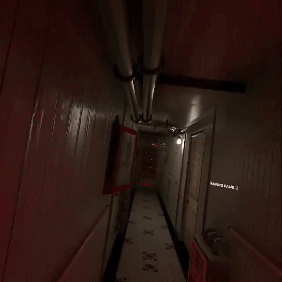
GAMEPLAY
Titanic: A Space Between is played by walking and crawling through rooms, halls, and vents, and bringing items to places.
The entirety of the gameplay consists of exploring and completing tasks to retrieve items.
Move here.
“Whoops, once again comms expresses their surprise!”
“Finding an item and taking it to a specific location is necessary!” communication persists amidst intermittent bouts of vomiting information.
Repeat.
Each time you begin to gain some traction—each time you attempt to participate in the activity—the activity explicitly states, “No! We do not engage in that behavior! Our objective is to search for an object and relocate it!” as it emphatically gestures towards the prominent words permanently marked on its forehead.
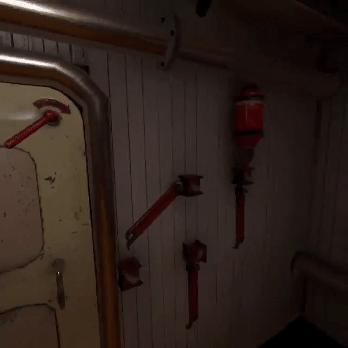
As a horror game, the majority of the environment is shrouded in darkness.
Your main tool, apart from your hands, which you use to interact with the world, is partially a flashlight.
Shortly into the game, your invisible power tether to HQ is spookily intercepted, leaving you to collect analog batteries stashed all about the ship to keep your flashlight working.
Now it must be said that having your primary resource suddenly become scarce ramps the horror element way up! And since that resource is light itself, you’re forced to choose when to wander these haunted halls in utter darkness, and when you must—either out of necessity or fear—turn on your flashlight.
In a space, that is simply excellent game design.
I am feeling fearful, and you have successfully fulfilled your promise with Titanic: A Space Between. Well executed.
However, when the main thing you—the player and purchaser of a videogame—are to do is search aimlessly for items, doors, and vents, not being able to see becomes a real issue.
Fortunately, placing your hand over your main device will display your goal as a sentence that is not very useful and may cause frustration.
“Locate the route to reach floor F.”
“Discover a means to unlock the padlock.”
“Advancement within the game.”
“Continue.”
Sure, I suppose I will continue to search blindly until I stumble upon the obscure location where you have concealed my ability to experience happiness within Titanic: A Space Between.
Is it hidden behind one of the crates that are typically immovable set pieces?
Can I push this one?
Certainly. Affirmative. What reason would there be for it not to be valid?
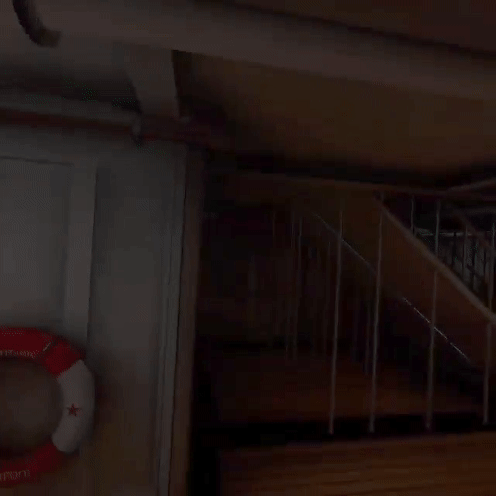
This game literally just hides things from you in the dark with little to no clues about where to look. The only guidance you get is just your device saying “Go do it.” And more than once it defies the expectations that it has set vis-a-vis what is or is not an interactable bit of the game.
This game deceives you in another connected manner through the usage of doors, which adds to its insidious nature.
Oh, man.
During gameplay, I had to search for a blunt item to forcefully open a door in order to access a knife. Subsequently, I used the knife to cut a rope and unlock another door.
After approximately twenty minutes of searching, I finally noticed a suitcase on the floor in one of the main rooms. This realization came after I had already spent a significant amount of time exploring, which made it feel like a waste of my valuable human existence on Earth.
I have encountered these identical duplicated assets previously!
How did I not notice this?
“I’ve been such a fool!” I said to myself, as I quickly bent down to retrieve it. This newly introduced VR feature, which involves raising your hand above the object on the floor and grabbing it, seems too simplistic for the immersive experience offered by this imperfect VR game.
Nothing.
There is absolutely no ability to hold the suitcase and no sign of any movement.
The game had determined that I had to locate a distinct blunt item in another room, and that this particular room required a suitcase, resembling the ones I had previously obtained effortlessly, solely for decorative purposes.
The game deceives you in another sneaky manner by using doors!
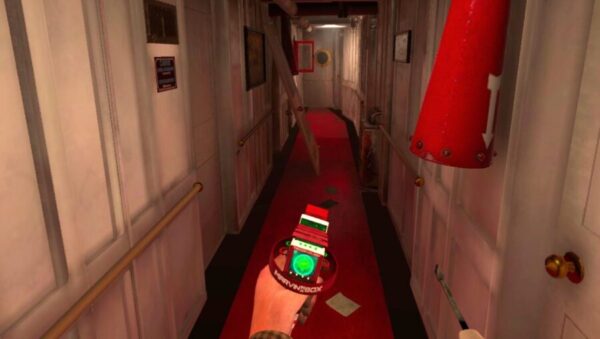
Almost all doors, regardless of whether they are accessible or not, appear identical.
As navigation is a fundamental part of the game, you will frequently find yourself trying to open numerous ornamental doors that have easily accessible handles.
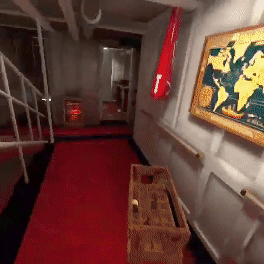
Graspable handles actually might be a bit too generous of a description however, since grabbing things correctly (which is essential to literally every aspect of in-game interaction aside from movement) is a big ol’ toddler-hands jank fest.
Why am I required to engage in negotiations using my own hands?
This issue persists consistently in numerous ways.
Performing a basic action like swapping between the two items stored on either shoulder can be a disrupting task that hampers immersion.
Frequently, you may find yourself reaching for one shoulder to grab something, but mistakenly end up grabbing the wrong one. In such cases, you need to remove the incorrect item from your hand and hold it at a distance from your other hand. This ensures that when you try to grab with your empty hand, it doesn’t automatically grasp the wrong item that you are already holding.
There is no advantage in gripping something with both hands!
What is the reason behind granting me permission to do this? It consistently obstructs my ability to obtain the actual object I am aiming for!
Why am I required to personally negotiate!?
Although usually just irritating, it becomes a real problem during the rare action scenes: Maneuvering pulleys and valves to rise up from a basement that is rapidly filling with water; swiftly opening a door and promptly shutting it to flee from a terrifying creature with spider-like legs. These tasks demand agility and smooth motion!
The difficulty of understanding and manipulating items and handles greatly impacts every aspect of the game.
It is quite evident that beneath the cumbersome mechanics lies a truly exciting and action-packed experience that contrasts with the slower pace of the rest of the game.
VERDICT
The level-design is not good. The basic mechanics are poorly executed. It is a constant struggle to prevent your character from getting trapped in walls. There are inconsistencies in what can and cannot be interacted with, including numerous invisible walls that also result in getting stuck.
I could continue expressing my dissatisfaction with my experience using another thousand words and still have additional thoughts to share, but I believe I have sufficiently conveyed my message.
Instead of addressing every individual issue, let’s focus on the positive aspects after discussing the major problems.
It is important to mention that I played an early version of this game*, and although there are other issues that have been mentioned, the main reason for my negative experience primarily revolves around frustrating basic controls. This problem then leads to numerous other problems.
*(Editor’s note: Specifically, the version reviewed here was Version 1.01 and labelled a “work in progress build” dated October 2023)
If these issues are addressed, then the entire review will be altered.
The difficulty of understanding items and handles greatly impacts every aspect of the game.
This point I can’t make clear enough.
…the team at Globiss Interactive has accomplished an impressive feat in terms of their handling of light and shadow, particle effects, and water physics.
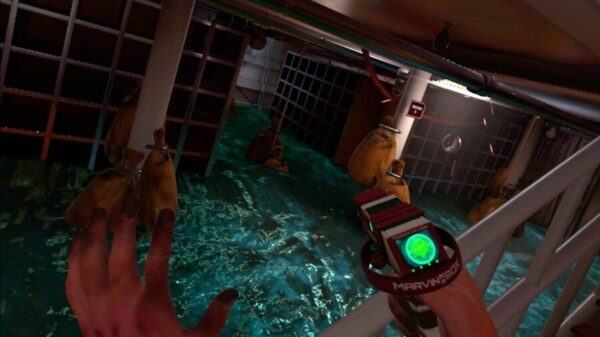
There is a significant opportunity for improvement in this area.
Fix grabbing. Patch some bugs. Sort some collision issues. Add some heft to all of the otherwise seemingly weightless items and who knows how this visual marvel might start to play?
While certain muddy textures and intrusive shifts in draw-distance may cause some issues, overall, this game is predominantly visually appealing.
Walking around and absorbing the unsettling sights of that famous ship, with utmost attention to historical details, is quite spine-chilling.
The team at Globiss Interactive has done an outstanding job in pushing the Quest hardware to its limits, particularly in terms of light and shadow, particle effects, and water physics.
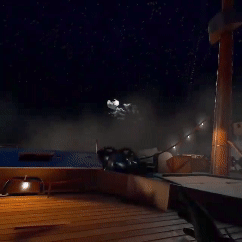
I genuinely wish that this duo’s commitment to their craft leads them towards even greater accomplishments.
Do not let critics like me discourage you, Globiss. My main aim is to inform and entertain the audience, but I recognize and appreciate the tremendous effort you put in.
I am confident that once you advance to leading a team capable of resolving any issues, conducting playtests, and making improvements based on your vision, you will create something truly remarkable.



